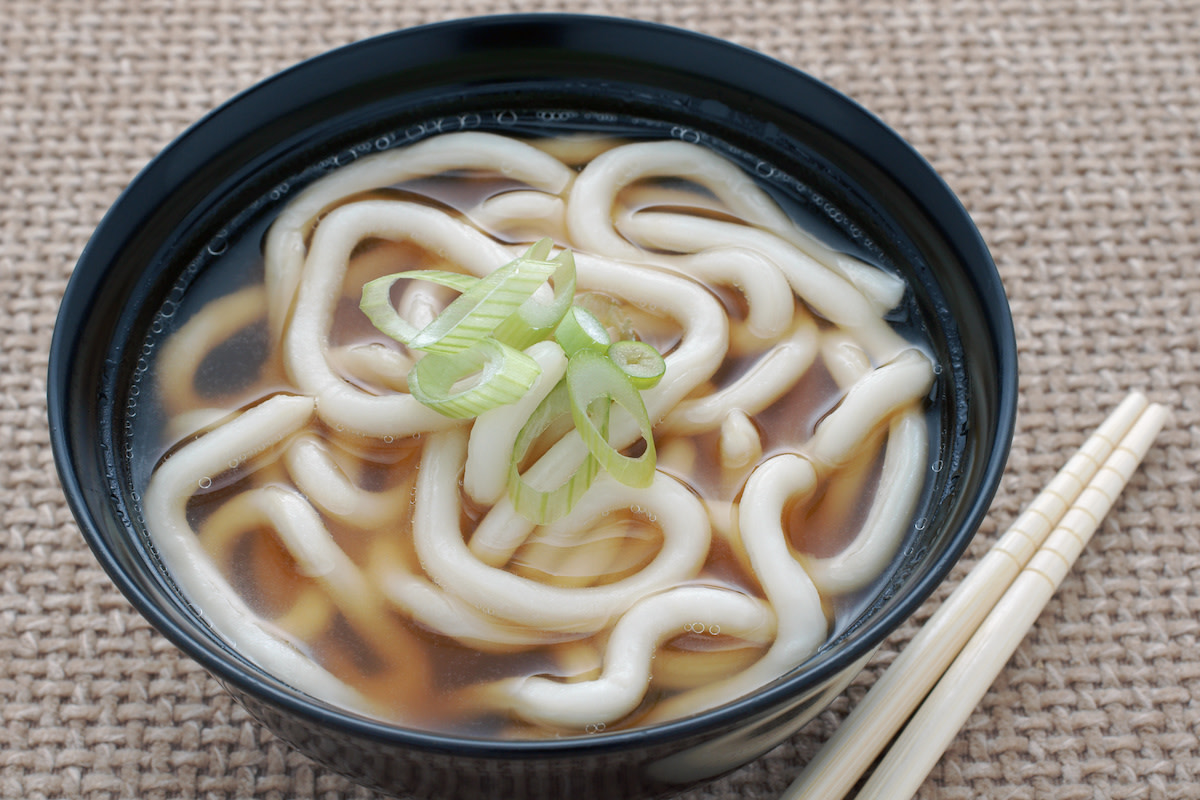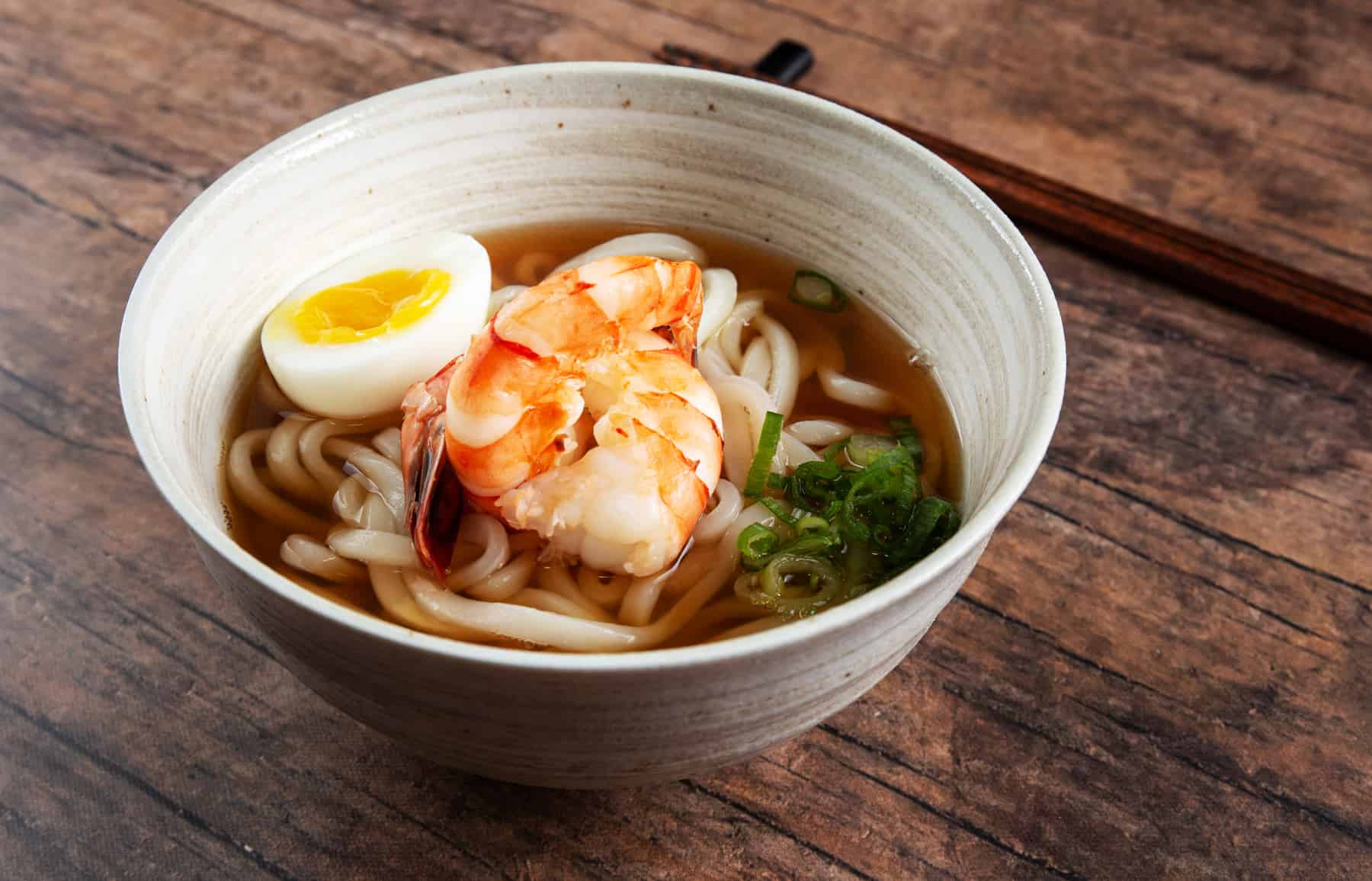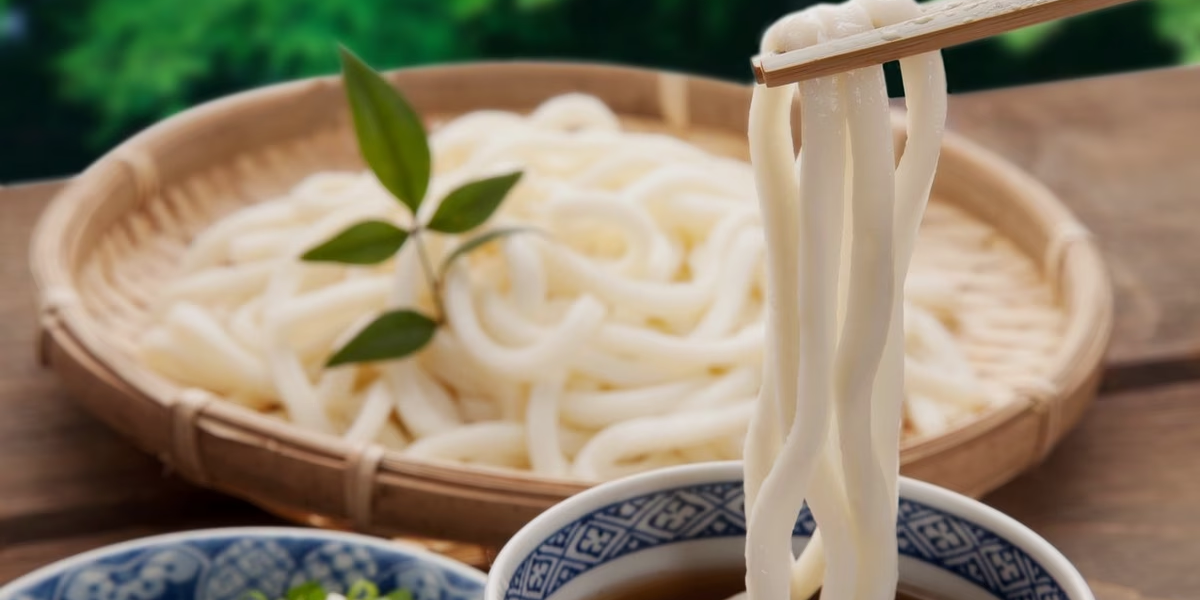Nestled in the heart of Japanese cuisine lies a culinary gem that has captured the hearts and palates of food enthusiasts worldwide – Udon. These thick, chewy noodles have transcended borders to become a beloved dish globally. But what exactly makes Udon so special? Let’s take a deeper dive into the origins, varieties, and cultural significance of this delectable noodle.
Origins and History:
Udon noodles trace their origins back to Japan’s Jomon period (14,000 – 300 BCE), where evidence suggests the consumption of wheat-based noodles. However, it wasn’t until the Nara period (710 – 794 CE) that Udon, as we know it today, started to take shape. Initially, it was considered a luxury food reserved for the aristocracy and monks. Over time, Udon became more accessible, evolving into a staple dish across Japan.

Ingredients and Preparation:
Udon noodles are typically made from wheat flour, water, and salt, resulting in a simple yet versatile dough. The dough is kneaded, rolled out, and cut into thick strips, giving Udon its distinctive chewy texture. Traditional methods involve hand-kneading the dough, although modern production often utilizes machinery for efficiency.
One of the defining characteristics of Udon is its versatility. Whether served hot or cold, in a clear broth or with a savory sauce, Udon adapts effortlessly to various culinary styles and preferences. Common toppings include thinly sliced green onions, tempura, fish cakes, and seaweed, enhancing both the flavor and visual appeal of the dish.

Varieties and Regional Influences:
While Udon’s basic recipe remains consistent, regional variations offer a diverse array of flavors and textures. Sanuki Udon, hailing from the Kagawa Prefecture, is renowned for its firm, chewy texture and square-shaped cross-section. In contrast, Kansai-style Udon tends to be softer and thicker, often served in a lighter broth.
Beyond Japan, Udon has also found its way into fusion cuisine, blending traditional flavors with modern twists. From Udon burgers to Udon stir-fries, chefs worldwide continue to experiment with this beloved noodle, introducing new and innovative dishes to global audiences.
Cultural Significance:
Udon holds a special place in Japanese culture, transcending its status as a mere dish to become a symbol of comfort and community. It is often enjoyed during festivals, family gatherings, and even as a late-night snack after a night of revelry. The act of slurping Udon noodles is not only acceptable but encouraged, symbolizing appreciation and enjoyment of the meal.
Moreover, Udon plays a role in preserving culinary traditions and fostering a sense of cultural identity. Many regions take pride in their local Udon varieties, passing down recipes and techniques from generation to generation. As a result, Udon serves as a culinary link to Japan’s rich cultural heritage, inviting both locals and visitors to partake in its delicious legacy.

A simple recipe for classic Japanese Udon noodle soup:
Classic Udon Noodle Soup
Ingredients:
- 200g (7 oz) dried or fresh Udon noodles
- 4 cups dashi stock (Japanese soup stock, can be made with bonito flakes and kombu)
- 2 tablespoons soy sauce
- 1 tablespoon mirin (Japanese sweet rice wine)
- 1 tablespoon sake (Japanese rice wine, optional)
- 1 teaspoon sugar
- 1 cup sliced mushrooms (shiitake, button, or any variety you prefer)
- 1 cup thinly sliced green onions (scallions)
- 2 cups fresh spinach leaves, washed
- 2 large eggs (optional)
- Toppings: Nori (seaweed), sesame seeds, tempura flakes, etc. (optional)
Instructions:
- If using dried Udon noodles, follow the package instructions to cook them until they’re just tender. If using fresh Udon noodles, you can cook them according to package instructions or simply blanch them in boiling water for 1-2 minutes until they’re heated through. Drain and set aside.
- In a large pot, bring the dashi stock to a simmer over medium heat. If you don’t have dashi stock, you can substitute with a combination of chicken or vegetable broth and a splash of soy sauce for flavor.
- Once the stock is simmering, add soy sauce, mirin, sake (if using), and sugar. Stir to combine and let it simmer for another 2-3 minutes to allow the flavors to meld.
- Add the sliced mushrooms and cook for 2-3 minutes until they start to soften.
- Next, add the sliced green onions and fresh spinach leaves to the pot. Cook for another minute until the spinach wilts slightly.
- If you’d like to add eggs to your soup, crack them one at a time into a small bowl and gently slide them into the simmering broth. Let them cook for 3-4 minutes until the whites are set but the yolks are still runny.
- Divide the cooked Udon noodles among serving bowls. Ladle the hot soup over the noodles, making sure to distribute the vegetables and eggs evenly.
- Garnish with toppings of your choice, such as nori strips, sesame seeds, or tempura flakes.
- Serve hot and enjoy your homemade Udon noodle soup!
:max_bytes(150000):strip_icc()/EWL-Udon-Noodle-Soup-Buttery-Tomato-Broth-2x3-258-fd4097bf3854430986c0061728011386.jpg)
Interesting facts about Udon noodles:
- Ancient Origins: Udon noodles have been enjoyed in Japan for centuries, with evidence of their consumption dating back to the Jomon period (14,000 – 300 BCE). Initially considered a luxury food, Udon gradually became more accessible and evolved into a staple dish across Japan.
- Versatility: One of the most remarkable qualities of Udon noodles is their versatility. Whether served hot or cold, in a soup or stir-fry, Udon adapts easily to various cooking methods and flavor profiles, making it a favorite ingredient in both traditional and fusion cuisine.
- Handmade Tradition: While modern production methods often involve machinery, traditional Udon noodles were handmade through a labor-intensive process. Skilled artisans would knead, roll, and cut the dough by hand, resulting in noodles with a distinctively uneven texture that enhances their chewiness.
- Slurping Etiquette: In Japanese culture, it’s not only acceptable but encouraged to slurp Udon noodles loudly while eating. This practice isn’t considered rude; rather, it’s a sign of enjoyment and appreciation for the meal. The slurping also helps cool down the hot noodles and enhances the flavors.
- Regional Varieties: Across Japan, different regions boast their own unique styles of Udon noodles, each with its own texture, thickness, and serving method. For example, Sanuki Udon from the Kagawa Prefecture is renowned for its firm, chewy texture, while Kansai-style Udon tends to be softer and thicker.
- Festival Food: Udon noodles hold a special place in Japanese festivals and celebrations. They are often served at local matsuri (festivals), providing nourishment and comfort to attendees as they partake in the festivities.
- Symbol of Longevity: In Japanese culture, eating long noodles like Udon is associated with longevity and good fortune. This belief stems from the idea that the length of the noodles symbolizes a long and prosperous life. As such, Udon noodles are commonly enjoyed during New Year celebrations and other auspicious occasions.
- Global Popularity: Beyond Japan, Udon noodles have gained popularity worldwide, thanks to their delicious flavor and satisfying texture. You can find Udon dishes in Japanese restaurants around the globe, as well as in fusion cuisine where chefs incorporate Udon noodles into creative and innovative dishes.
- Health Benefits: Made primarily from wheat flour and water, Udon noodles are naturally low in fat and cholesterol-free. They’re also a good source of carbohydrates, providing energy for the body. When served with vegetables and lean proteins, Udon noodle dishes can be a nutritious and filling meal option.
- Cultural Heritage: Udon noodles not only satisfy hunger but also serve as a cultural symbol, representing Japan’s rich culinary heritage and sense of community. Recipes and techniques for making Udon are often passed down through generations, preserving traditions and fostering a sense of cultural identity.

(FAQs) about Udon noodles:
Q. What is Udon?
- Udon, a thick and chewy noodle, is a Japanese specialty. A variety of Japanese cuisines call for this ingredient, which is a combination of wheat flour, water, and salt.
Q. What does Udon taste like?
- The flavor of udon noodles is moderate and somewhat sweet. The texture is just right—soft and chewy—and it really elevates the dish.
Q. How do you cook Udon noodles?
- Boil Udon noodles for a few minutes until they’re soft but still have a little bite to them. Another option is to cook them in a stir-fry or soup that is already simmering.
Q. Can I use Udon noodles in stir-fries?
- Udon noodles are great in stir-fries, no doubt about it. Their chewiness and thickness make them ideal for stir-fry since they absorb both the heat and the sauce.
Q. Are Udon noodles gluten-free?
- Udon noodles are traditionally prepared with wheat flour, which means they do not contain gluten. Noodles produced from rice flour or buckwheat, which resemble Udon noodles in texture, are gluten-free alternatives.
Q. What are the health benefits of Udon noodles?
- Cholesterol and fat are not present in udon noodles. They are rich in carbs, which the body uses for energy. In addition, udon noodle dishes can become a healthy and well-rounded choice when they are served with veggies and lean meats.
Q. Can I eat Udon noodles cold?
- Cold Udon noodles are delicious, especially in zaru Udon (cold Udon noodles with dipping sauce). On sweltering days, nothing beats a bowl of cold udon noodles for a pleasant and revitalizing lunch.
Q. Are there different varieties of Udon noodles?
- Udon noodles come in a wide variety of thicknesses, flavors, and preparation methods across Japan’s many regions. Kishimen, Sanuki Udon, and Inaniwa Udon are a few examples.
Q. What are some common toppings for Udon noodles?
- Sliced green onions, tempura flakes, fish cakes, nori (seaweed), kamaboko (fish cake), and several kinds of tempura (fried seafood or veggies) are common toppings for Udon noodles.
Q. Is it customary to slurp Udon noodles?
- Slurping Udon noodles noisily when eating is really welcomed and accepted in Japanese society. Some people think that slurping the noodles makes them taste better, and others think it shows how much they like the meal.
Conclusion:
Udon is a beloved staple that has stood the test of time due to its adaptability, cultural importance, and simplicity in a world full of delicious foods. Udon, whether eaten in a crowded Tokyo noodle store or lovingly prepared in a kitchen on the other side of the world, never fails to wow diners and prove that the simplest things may often be the most delightful. Udon noodles are a delicious Japanese dish, so try them the next time you want a little taste of Japan. Imagine a world where every bite is a gourmet delight.
